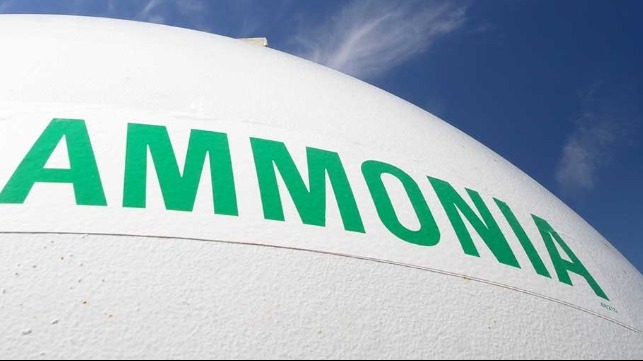Study: Ammonia is Essential to Shipping’s Energy Transition
August 2, 2021 Maritime Safety News

The shipping industry must transition to ammonia as the main source of fuel to attain decarbonization targets and meet the goals of zero carbon emissions by 2050, according to a new study by BloombergNEF.
In its latest annual energy outlook report, BloombergNEF says the world must work on strategies and commit significant investments to ensure ammonia derived from hydrogen becomes the dominant fuel in shipping for new vessels post-2030.
Transiting to ammonia is expected to contribute two-thirds of emissions reductions by 2030 and account for around 45 percent of abatement in the shipping sector by 2050.
“Biofuels and ammonia derived from zero-carbon hydrogen each make up 18 percent to 35 percent of emissions reductions,” notes the report.
It adds that while hydrogen, carbon-capture-and-storage (CCS) and new nuclear technologies are not expected to play a meaningful abatement role in the 2020s, getting them to scale is a critical task for this decade. Scaling up CCS, for instance, is forecast to result in on-board CCS, allowing fuel oil to continue to supply around 17 percent of final energy in shipping by mid-century.
The report shows that large investments in energy infrastructure are needed for the energy transition, with capital flowing away from fossil fuels and toward clean power and other climate solutions. Over the next three decades, the world will need to invest up to $173 trillion in greener energy infrastructure and supply to achieve net-zero carbon emissions by 2050.
To achieve this, annual investment will need to more than double from around $1.7 trillion per year today, to somewhere between $3.1 trillion and $5.8 trillion per year on average over the next three decades.
Around 53 percent of all investment must be directed towards the production, storage and transport of hydrogen.
To achieve net-zero in 2050 with an orderly transition, global energy-related emissions also need to drop 30 percent below 2019 levels by 2030 and 75 percent by 2040 to reach net-zero in 2050.
This is a 1.75 degree equivalent budget that implies a 3.2 percent reduction each year to 2030, and a swift reversal of recent trends. Emissions rose 0.9 percent a year from 2015 to 2020.
“The energy transition is inherently uncertain. Hydrogen, nuclear and carbon capture could all play an important role in helping the world reach net-zero, and each of these technologies must be further developed and brought to market in the coming decade if they are to realize their potential,” said Matthias Kimmel, BNEF’s head of energy economics.
Hydrogen in particular must scale rapidly from its current very small base, with a target of increasing to around 22 percent of total final energy consumption – compared with less than 0.002 percent today.
“Hydrogen has many applications as an energy carrier and for emissions abatement to help meet the net-zero target whether displacing fossil-fuel combustion in industry, buildings and transport or complementing renewables to help meet seasonal demand in the power sector,” notes the report.
The shipping industry is coming under increasing pressure to decarbonize and shift away from reliance on fossil fuels, with ammonia looking like an attractive alternative. It is projected that if 30 percent of shipping switched to ammonia as a fuel, the current production must double. Today 80 percent of ammonia produced is used exclusively for the fertilizer industry.
The shipping industry emits around 940 million tons of carbon dioxide annually and is responsible for about 2.5 percent of global greenhouse gas (GHG) emissions.
SOURCE READ THE FULL ARTICLE
https://www.maritime-executive.com/article/study-ammonia-is-essential-to-shipping-s-energy-transition





